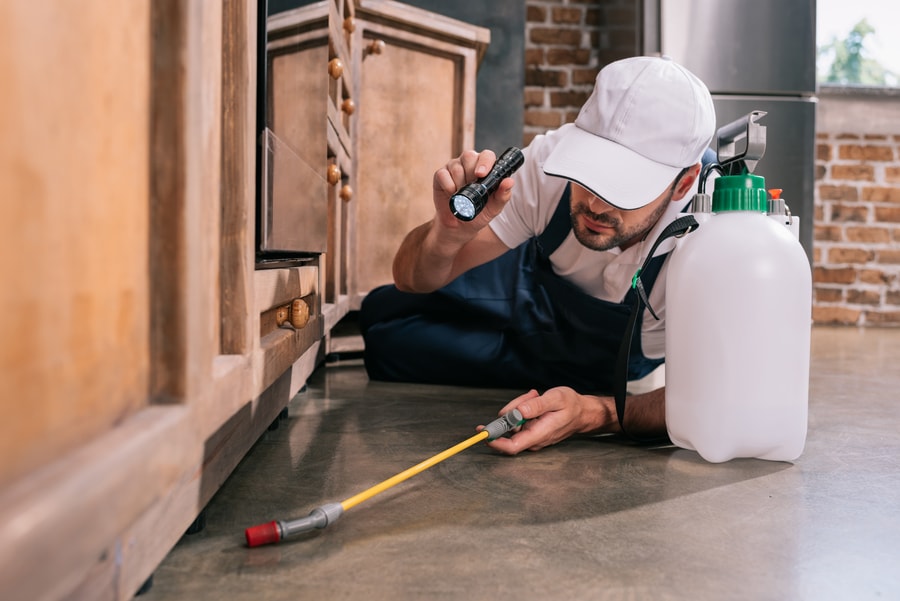When Should I Perform Pest Control?
There are some situations in which you should perform pest control on your property. These include homes that are near bodies of water and natural landscapes. These areas are popular breeding grounds for insects and often have abundant food sources. Water also attracts a wide range of insects. As such, performing pest control on a property near these areas is essential to prevent the spread of harmful organisms.

Extermination
The best way to avoid a pest infestation is to perform extermination as early as possible. This is a simple process that involves cleaning and preparing the home for the exterminator. For example, homeowners should take care to mow the lawn, remove any garbage, and put the garage door open. Additionally, they should be sure to supervise their children and pets. If pets are present, they should be relocated to a neighbor’s house or placed in a safe place.
After a pest treatment, you should wait at least two to four hours before returning to your home. The longer you wait, the less likely you are to inhale the chemicals used. Additionally, you must make sure that the air in your home is sufficiently ventilated for the following half hour. Alternatively, you can open windows to allow fresh air to enter the house.
Non-toxic extermination
Eco-friendly pest control methods can help the environment because they do not release toxic chemicals into the air. They are also safe for humans, pets, and plants. When used correctly, non-toxic extermination for pest control is just as effective as synthetic products. In addition, using eco-friendly products will result in fewer greenhouse gases in the atmosphere.
The use of non-toxic extermination methods is more common these days because it is safe and less expensive. The main benefits of non-toxic methods are that they emit lower odor than synthetic products and they are stain-free. As a result, they are great for use in areas where chemical-based products can damage fabric and carpets. In addition, they are safe to use in areas that are otherwise off-limits to the use of harsh chemicals.
Health risks
In performing pest control, workers are exposed to a variety of chemicals, including those that can be dangerous to health. Fortunately, there are many ways to minimize the risk to your health. These include using protective clothing and equipment, which protects you from exposure to chemicals. Many pesticides are classified according to their toxicity, which measures their ability to cause harm to people. Choosing the lowest-toxic pesticides will reduce the risks.
Before applying pesticides, employees should first conduct a risk assessment. This assessment will determine how much exposure to the pesticide is acceptable. The risk assessment should consider various factors such as the type of pesticide and the methods of application. The risk assessment should be thorough and supported by evidence, and it should include appropriate controls.
Preparation
Preparation for performing pest control is as varied as the pests themselves. For starters, make a note of the areas where you suspect a pest infestation has taken place. It is important to note this information because different pests have different activity schedules. For example, rodents spend a lot of time hiding, so you will have to look for evidence before you can begin the treatment.
The goal of pest control is to control the number of an infestation while causing the least amount of harm to other organisms. There are three different types of pest control: prevention, suppression, and eradication. Prevention is necessary when you can identify the type of pest and its damage. Preventing the presence of pests is a much better approach than trying to control them once they have already appeared.
Cost
The cost of performing pest control varies from home to home, and it depends on the type of treatment needed. Generally, a one-time visit will cost between $500 and $1500. During this visit, a pest control technician will assess the infestation and apply a treatment plan. After treatment, a follow-up visit may be necessary to confirm that the treatment is working. These visits also include a revision of the treatment plan.
The number one factor in the cost of performing pest control is the type of pests present in the service area. If the home is heavily infested with a particular type of pest, an exterminator will likely need to use specific products to target the problem area. Additionally, larger service areas will typically cost more because they require more materials and labor to thoroughly inspect every crack and crevice.

